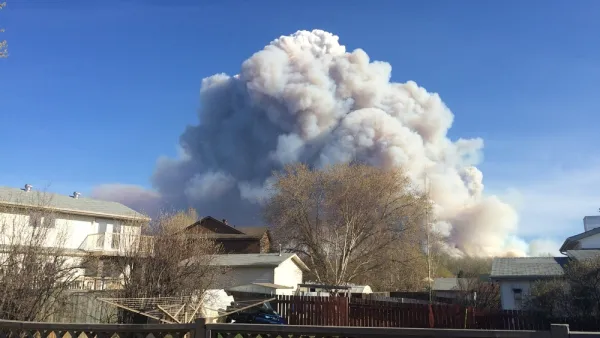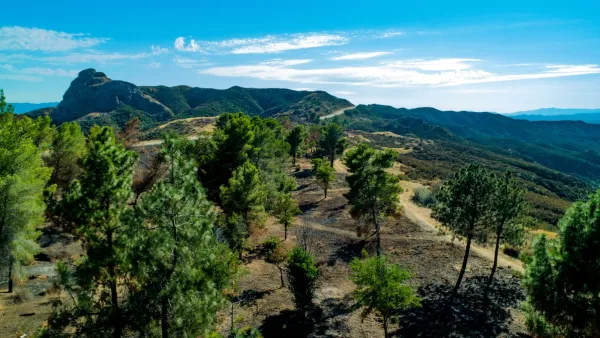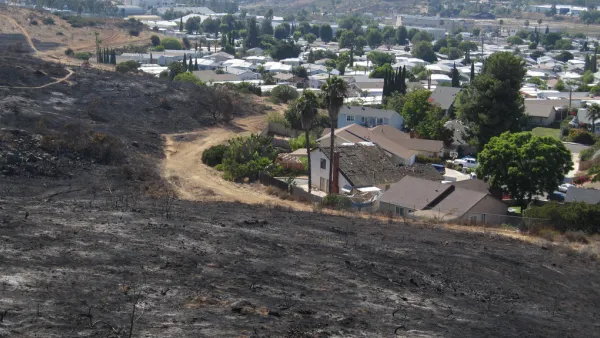In Colorado and the West, the most desirable real estate is also the most likely to burn, writes Michael Kodas.
"It's no surprise that people like to live near forests and mountains," writes Kodas, "but that's precisely where wildfires occur. And because those new residents naturally want to keep their homes safe, they demand that small, otherwise beneficial fires be put out if those blazes threaten their property, which causes forests to become unnaturally thick with unhealthy trees just waiting for a spark. And sparks are exactly what humans often provide."
"It's a vicious cycle: more building in the wildland urban interface [WUI], more property at risk, more firefighting, more fire-prone forests (and in the age of climate change, more hot, dry weather). All of which helps explain why, across the West over the last 20 years, fighting fires has gone from taking up 14 percent of the U.S. Forest Service's budget to almost half of it."
"'Everybody knows that firefighting costs are going up, and everybody knows the WUI has a lot to do with it,' says Ray Rasker, director of Headwaters Economics, an independent research group in Bozeman, Montana. According to the group's data, the U.S. government is spending as much as $3 billion a year to fight wildfires -- twice what was being spent 10 years ago. 'About a third of those costs are for defending homes,' Rasker adds."
Thanks to OnEarth
FULL STORY: Life on the Edge (of Wildfire)

National Parks Layoffs Will Cause Communities to Lose Billions
Thousands of essential park workers were laid off this week, just before the busy spring break season.

Retro-silient?: America’s First “Eco-burb,” The Woodlands Turns 50
A master-planned community north of Houston offers lessons on green infrastructure and resilient design, but falls short of its founder’s lofty affordability and walkability goals.

Delivering for America Plan Will Downgrade Mail Service in at Least 49.5 Percent of Zip Codes
Republican and Democrat lawmakers criticize the plan for its disproportionate negative impact on rural communities.

Test News Post 1
This is a summary

Test News Headline 46
Test for the image on the front page.

Balancing Bombs and Butterflies: How the National Guard Protects a Rare Species
The National Guard at Fort Indiantown Gap uses GIS technology and land management strategies to balance military training with conservation efforts, ensuring the survival of the rare eastern regal fritillary butterfly.
Urban Design for Planners 1: Software Tools
This six-course series explores essential urban design concepts using open source software and equips planners with the tools they need to participate fully in the urban design process.
Planning for Universal Design
Learn the tools for implementing Universal Design in planning regulations.
EMC Planning Group, Inc.
Planetizen
Planetizen
Mpact (formerly Rail~Volution)
Great Falls Development Authority, Inc.
HUDs Office of Policy Development and Research
NYU Wagner Graduate School of Public Service





























